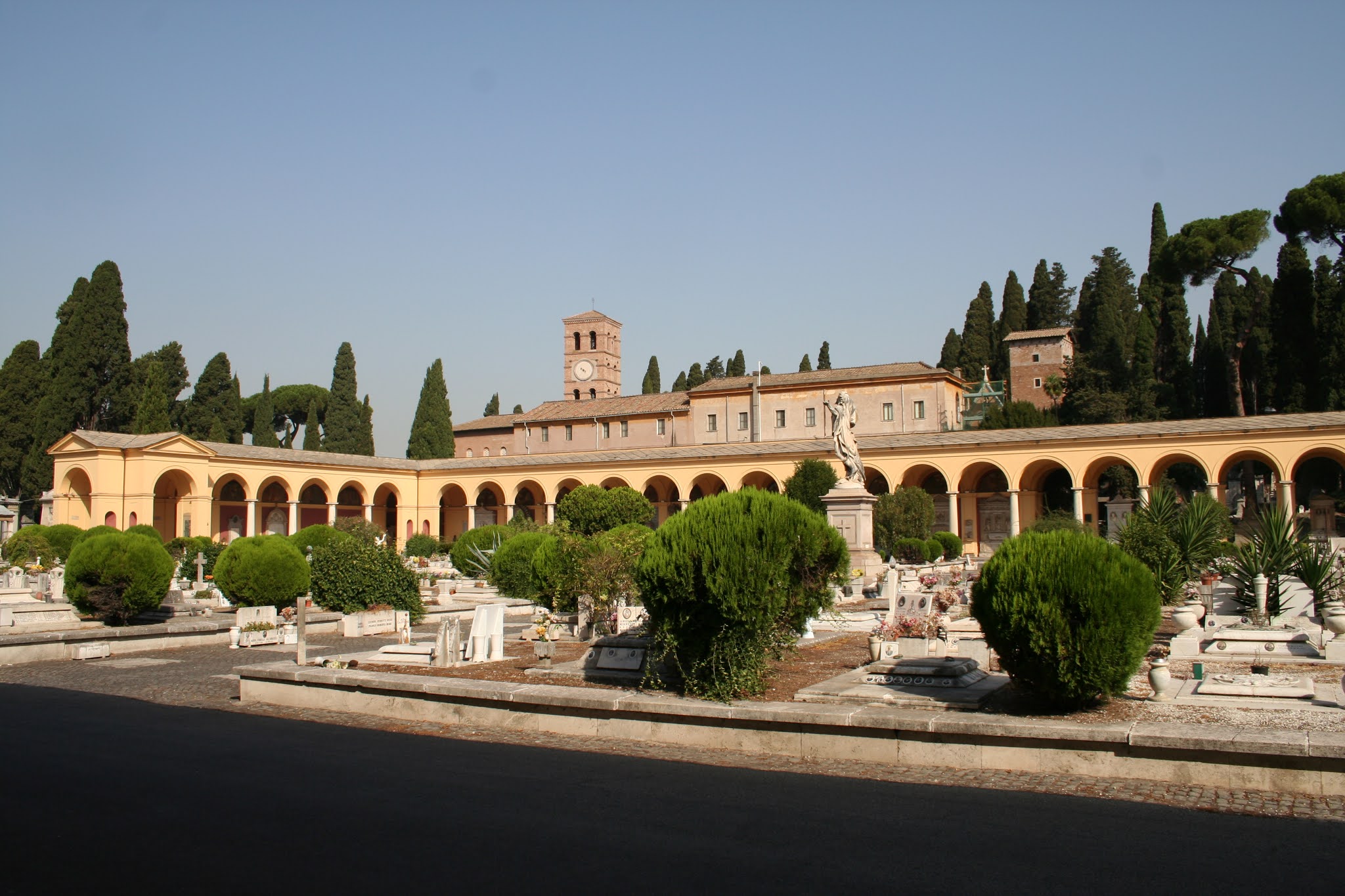
The name verano refers to the Ancient Roman "campo dei Verani" that was located in that area and contained ancient Christian catacombs.
About the cemetery
The project for the municipal cemetery in Rome first surfaced during Napoleon's times. Works then began in 1811 in the selected area, close to the Basilica of San Lorenzo Fuori le Mura (outside the city wall), a plot that originally belonged to the Verani family. In 1859 additional works began, on the basis of a plan by Virginio Vespignani. Overall, the aspect of the Cemetery is typified by the original XIX century structure by Vespignani (gateway, Quadriportico and Chapel), that are matched, in terms of architectural and urban quality, by the remarkable structures of the Pincetto vecchio and the Pincetto nuovo, with especially valuable items from the last decades of the XIX century onwards.
The cemetery hosts several works by major Roman and Italian architects and sculptors, such as G. Koch, Pio and Marcello Piacentini, G. Monteverde, E. Ximenes, P. Canonica, E. Ferrari, D. Cambellotti. The series of XIX century funerary portraits by Filippo Severati are especially interesting, due to the originality of materials and their inherent quality: they are painted on lava and represent an important gallery of the affluent Roman bourgeoisie, who, as clients, required artefacts up to their role.
The cemetery hosts several works by major Roman and Italian architects and sculptors, such as G. Koch, Pio and Marcello Piacentini, G. Monteverde, E. Ximenes, P. Canonica, E. Ferrari, D. Cambellotti. The series of XIX century funerary portraits by Filippo Severati are especially interesting, due to the originality of materials and their inherent quality: they are painted on lava and represent an important gallery of the affluent Roman bourgeoisie, who, as clients, required artefacts up to their role.
Address
Verano Monumental CemeteryRecord and Research Centre
Piazzale del Verano
I - 00100 Roma
Email: infodocumentazioneverano@comune.roma.it
Web: www.comune.roma.it
Tourist Information Office
APT - Roma Via Parigi, 1100185 Roma
Phone: +39 06 488991
Fax: + 39 06 4819316
Email: info@aptroma.com
Tourist information
www.romaturismo.it (Tourist info)www.comune.roma.it (City portal)
www.adr.it (Airport)
www.trenitalia.it (Italian railways)
www.atac.roma.it (City buses)
